Not a day goes by without us being confronted by images of a failing system. On ecological, humanitarian and economic levels we see the results of all kinds of crocked growth. The world around us has always been the stage and the backdrop of our actions, but have we, the actors on this world stage, outgrown the scene? It seems as if we no longer want to experience our connection with this evolution.
An imbalance has arisen as a consequence of our idea of progress: a society in which collective beliefs and frameworks have given way to individual needs and development. The good intentions of the past are now partly the problems of today.
Is the system coming to an end, to make way for another? This system of centralised ‘white’ power brought about a higher level of well-being for some, the ‘haves’ you might say, but at the expense of many others. Some people try hard to maintain the status quo of the well-beaten tracks. Self-preservation is human-nature and change – in one form or another – generally inspires fear. There is sometimes the will to change, but not the know-how: for example, some companies struggle to keep up to date with their product, production method or revenue model.
A quick glimpse at the 70+ submissions in the category ‘youth’ (or rather Young designers) of the Dutch Design Awards, gives hope. A diverse variety of both mature and brand-new designers who tackle all kinds of topics with tangible or intangible designs. They do justice to the fundamental power of the design world: the ability to deal within a given situation or problem in such a way that brings unforeseen potential to the fore. But they do more than that. With an open visor and a hunger for change, this generation is introducing nuance and broadening the discipline. These designers create their own conditions, aesthetics and qualities. They are open to the world around them and tackle it head-on with an honest, playful, inquisitive, powerful and inclusive, inherent and interdisciplinary design attitude. Everything is tangible and the tools are omnipresent.
Where in the past words like innovation, creative industry and design thinking were synonymous with trust in the problem-solving capabilities of a discipline, the potential of these designers now truly manifests if the discipline is involved and fundamentally integrated into the (re)design of our systems, from decoding our language to the way we make policy and structure our society. This generation reflects our time and recognises and defines issues that some of us do not yet see or even recognise. As if they have feelers or antennae for the era that is to come. Of course, they stand upon the shoulders of others, after all, these young designers were nurtured by art and design education and the subjects it includes. Departments like The Master of Voice, workshops like ‘emphatic listening’, subjects like Material Agency, Gender studies and the immaterial yet palpable quality of performance that is now so present in our cultural landscape, all have their repercussions.
While the ‘sector’ is becoming more society-focused, this generation seems to be distancing itself from rhetoric and the implications of a neo-liberal ideology. A good design unites different kinds of values and a good designer is conscious of the downside of a design. The interests and thereby the responsibilities are significant now that so much trust has been placed in the design community. The well-being of everyone, not just the few, is at stake.
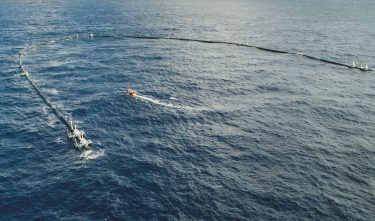 1
1
Like a modern-day Joan of Arc, environmental activist Greta Thunberg takes to the world stage. She speaks to us directly, calls us to order, calls us to action. But what knowledge is she acting upon? Which memory manifests itself in her belief? Let’s take a moment to reflect on the responsibility we are projecting upon this generation. There is plenty of discussion in the field about media-related projects like The Ocean Clean Up, initiated in 2012 by aerospace engineering student Boyan Slat. Whether or not the project succeeds should legitimize the role of the designer and the ‘crowd-funded’ amount of 33 million US dollars. The value of the project is not measured by the contribution it delivers in terms of raised awareness, of hope, of every little helps. No, failing is not an option. We out-source our own responsibility (and thereby our own guilt, or guilty feeling) by making a financial contribution to someone else’s courage. We expect a solution in return. But why is there so much responsibility resting on the shoulders of this generation, or designers in general?
How does this relate to the responsibility taken by the creative bankers at Lehmans who caused the 2008 crisis? And is it not designers who actually design all the things now floating in the plastic soup?
The oceans and seas cover a total of 72% of the Earth’s surface (~3.6 x 108 km2). So, this $33 million has to clean up XXXXXXXXXXXX of plastic, which is € 0, XXXXXXXXXXXXXXX1 per cubic litre in our oceans. Is this a realistic expectation? Should we not adopt a more critical yet generous attitude towards the future generation?
It seemed that a similar fate also awaited Massoud Hassani’s project Mine Kafon Ball. After fleeing Afghanistan, he came to the Netherlands and graduated from Design Academy Eindhoven in 2011. His project received a great deal of media attention, a kick-starter funding campaign followed and the Mine Kafon (“kafon” means explosion in Dari) was included in the archive of the Metropolitan Museum of Arts (MOMA) in New York. A discussion about the responsibility of the designer arose when it turned out that his wind powered mine sweeper made from materials like bamboo and plastic only worked once or not at all. A focus on the functional value of the project undermined its cultural or social value. Massoud and his brother Mahmud are currently working in an old MOSA factory in Maastricht on a drone version, one to find the mines and another for detonating them. The first prototypes have been developed and sold and they employ ten people. The courage and tenacity of these designers demands respect.
However, the purchasers of these drones are not NGOs or actions based on humanitarian grounds championing the quality of life of those living in these deserts. The mines are actually being cleared in order to extract the raw materials hidden beneath the surface. Win-win you might think, but the fact that the incentive for these actions is once again economically motivated is far from encouraging.
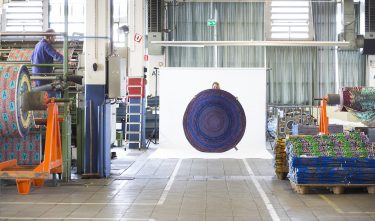 2
2
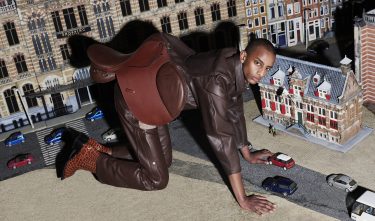 3
3
The action-based approach for social issues has now been introduced. Now it’s down to us, and to all of us, to come up with an approach that transcends the level of one-off projects by motivated individuals. Critical mass is needed to make a real impact, to share knowledge, to scale-up or to spread out. The word will continue, what about us?
Against the disposable culture and unused waste, against social entanglement and prudishness, against one-dimensional fashion/self-image.
Hope springs eternal.
Whoever has the youth, has the future…
Thank goodness we have this generation of young designers.
Saskia van Stein, DDA jury member and committee chair in the category ‘Young Designer’
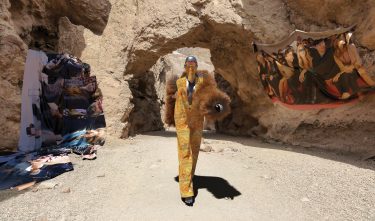 4
4
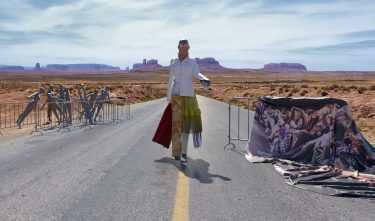 5
5